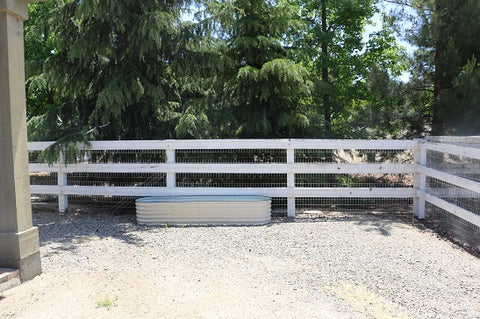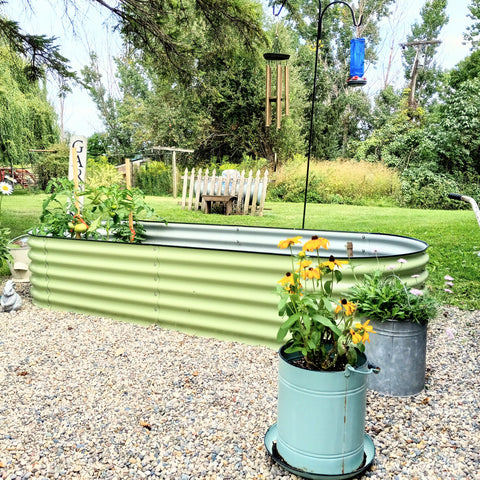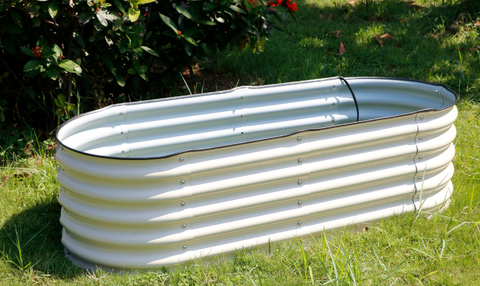Garden bed tips: Basics You Should Know about Indoor Gardening
If you are lucky to have a natural green thumb, then continue to do what you are doing. However, if you are just human like the rest of us, it will take time and a lot of experiments and mistakes to solve the problem. It is important to know some basic knowledge of indoor gardening, so as to provide you with the best opportunity to plant gorgeous plants. Of course, these common sense also apply to raised garden beds.
By understanding the principles of what happens above and below the dirt, you can save yourself some trouble. Although you can come back here after killing many plants, why not start from the indoor gardening guide and give you all you need?

We will look at how plants grow, and then study in depth what you need to do to promote healthy growth, even for beginners. Anyone can learn how to garden indoors!
How do plants grow?
Most likely, you will buy a plant from a store or from someone who has grown up completely. Although we will further introduce adult plant care, let's start with the seeds of this process - the seeds themselves.
Planting plants from seeds is a wonderful process, and is equipped with some basic knowledge of indoor gardening, which is also easy.
Plant growth stage
There must be stages in the growth of each plant. We don't usually think about them. You just need to insert a seed in the pot, and a plant will appear, right? But each stage has different needs, which should be met.

seed
The seed itself is a fascinating thing. In a small shell, it contains not only the beginning of the plant, but also what it needs to maintain itself until it can form a root.
The seed has three "basic" parts: seed coat, endosperm and embryo.
When we see a seed, we only see the seed coat. This thick exterior provides protection for future factories.
From there, the endosperm provides all the nutrients the plant needs initially. This completely encloses the embryo in most seeds, providing easy access to maintenance. This is not just for plants - we also eat endosperm! Anyone who has eaten popcorn or white rice has chewed delicious endosperm.
Finally, there is the embryo itself. Embryonic plants have three main components: roots, cotyledons, and embryonic leaves. All this is hidden in that little seed.

Of course, we all know what root is. Cotyledons are the external food source once plants appear, and embryonic leaves are usually the first two leaves that appear after seed germination.
If you store the seeds in a dry and closed place, they will not enter the future stage until the conditions are suitable. The seed can survive for many years, although the endosperm will gradually decrease and reduce germination over time.
sprouting
Germination means that the seed is no longer shy and comes out of the shell. Seed germination needs to meet two conditions:
Water. The seed absorbs water and rehydrates, thereby triggering the growth process.
Warm. Different plants need different degrees of heat to germinate normally. If it is too cold or too hot, the seed will decide to remain dormant.
Germination may take several days, from a few days for most vegetables to a few weeks for some trees. The following methods can inhibit germination:
Plant the seeds too deep. Be sure to follow the instructions for the seeds and not just throw any amount of soil on the plants. Some seeds can be placed on top of the soil. Others want to be under the surface of the soil.

Poor quality seeds. Seed manufacturers must test the germination rate of their seeds to ensure that they do not sell a pile of duds. Insist on using organic and non GMO seed distributors to ensure the highest quality. If you have the remaining seeds from the previous season, test a handful of seeds - if they germinate well, do so.
Too much or too little water. Most seeds like to germinate in even moist soil. If it is too dry, they will not germinate. Too much water can actually drown young plants!
When a seed germinates for the first time, it relies on its endosperm for initial growth. It sends the roots underground to establish a support system that will use the nutrients in the soil to further grow.
vegetation
Now that the seedling has grown down its roots to absorb soil nutrients, it needs to stretch its leaves so that it can begin to gather light to produce the required energy.
In the vegetative phase of growth, plants grow their stem, branch, and leaf areas to reach lighter areas. They grow more leaves and larger leaves, so they have a larger surface area to absorb light.
In doing so, they crave nitrogen (N on the label of N-P-K fertilizer) to produce chlorophyll, which is a material that allows plants to absorb energy from light. Interesting fact: Most chlorophyll is green, which makes many plants green!
reproduction
The reproductive stage is when the energy used for plant growth is now dedicated to flowering or sowing. During reproduction, phosphorus is an important nutrient, because it is helpful for flowering or fruit growth.
This phase can be triggered by changes in the length of the sun. Plants are very sensitive to these changes, and this sensitivity itself is called photoperiodicity.
But plants only notice the light itself, not where it comes from. This is why artificial lighting can be used to control the growth of indoor plants. As long as you have a good spectrum similar to natural sunlight, your plants will grow.

At this stage, you will also find pollination, which is the way plants begin to develop seeds and reproduce. If you have an indoor garden that needs pollination, that means you have to pollinate them yourself.
Most people use cotton swabs to do this, gently brush it inside a flower, and then move to the next flower and the next flower. This is not a difficult process. It is unnecessary for plants that do not want to open fruit or do not collect seeds.
dormancy
People who grow perennials (plants that live longer than a year) know that they are dormant. This is a stage of the life cycle, which is often ignored because annuals do not have it, but I am glad to know. At this stage, plants can stop growing until they reach a better growth environment.
You can think of this as a kind of hibernation during the hot winter or summer. This dormancy period will make them look like they are dying. However, they are saving energy until the right time. Smart little sucker, right?
Due to the low light time and temperature in winter, dormancy occurs naturally with the change of seasons. For plants that like cold, dormancy may also occur throughout the summer. Once the heat fades, the plants will return.
Indoor plants may not have as many winter dormancy periods as outdoor plants, but they can still occur from December to February in the United States. Fortunately for us, summer dormant plants seem to like cool indoor temperatures, so they may not enter dormancy at all.

During the dormancy period, the retention of fertilizer and water is reduced, because the amount absorbed by plants is not so much compared with other times of the year.
If your plants really decline when you start to give them less water+nutrition, they may not experience a dormancy period, and you should treat them normally.
So far, you have a good understanding of each stage of growth! So let's move on to other key information about how plants grow.
Understand the root cause
Although we may appreciate what plants or trees are on the ground, what is underground is where magic happens.
The root is the IV of the plant. They absorb air, water and nutrients from the soil and transport them to the leaves for photosynthesis (this is how they generate energy to grow).
If the root does not have enough space to grow, then plants and trees, no matter what they are, will reach a certain size and cannot grow further. It's like limiting your calories to the range where your body needs to maintain the same weight. Because you don't get any extra calories, you can't grow.
However, if your plant grows well and then looks sick, it may indicate that your root system needs growth space to support the plant. Now is a good time to re pot plants.
On the other hand, indoor gardeners may encounter some problems. They have too much space for root growth.
A container that is too large is called a "flood point.". The problem is not in the root, but in the end too much soil. Whenever you water plants in a container larger than the one you need, the water will be in the soil and the soil will not be absorbed by the smaller roots. This reduces aeration of the soil and causes the roots to rot rather than swell. This does not happen in nature because the soil drains better.
What happens if you destroy the roots of plants? The good news is that if damaged, plants can regenerate roots. The key is how many roots are damaged. If there are not enough roots for plants to absorb enough life (water, nutrients, air), then plants will wither.

Learn about leaves
Leaves are biologically sophisticated solar panels that convert light into plant energy. If you want to get into the technical details, the process of photosynthesis actually produces glucose to provide fuel for plants. But you still remember from school, so we don't need to enter that, right?
Ye is actually a good communicator. The problem is that we are bad listeners. Here are some ways to understand what plants need by listening to their leaves:
Start yellowing? Your plant needs less H20 or more nutrition! First, try to water your plants less, but still give them enough water (don't punish them for yellowing you). If they continue to turn yellow, it may be a sign of nutrient deficiency, and they will need some plant food. Read more about plant nutrients.
Brown and crisp? Your factory needs more H20! Don't water them, but make sure the soil is moist. Find the right consistency of water, and the soil will continue to dry, but the leaves will not turn brown and crisp.
Military Intelligence Agency (missing in action)? Your factory needs more H20 or sunshine! When there is not enough water or sunlight, your plant can not carry out photosynthesis, so it will not grow any new leaves or grow. First test to give your plants more water. If this doesn't work, try to give them more light, too.
Yellow spots? Pests can reach indoor plants just as they can reach outdoor plants. If your plant leaves begin to form yellowish spots, you may have spider mite problems. Scaling can also occur indoors and can cause other problems.
What do plants need to grow?
First, let's look at the scientific requirements.
5 things needed for plant growth
Light. Plants use light as energy to convert water, carbon dioxide and nutrients into sugar they can eat. This process is called photosynthesis. When their light level is low, they may go hungry because they have no energy to make their own food.
Water. Photosynthesis is needed to enable plants to obtain nutrients from the ground. Water also provides the necessary humidity around plants.
carbon dioxide. Plants absorb carbon dioxide from the surrounding air for photosynthesis.
Growth medium. The most common is the soil. Plants need something to dig their roots, so that they can keep upright and absorb nutrients from the growth medium.
nutrient. Just as humans need nutrients to stay healthy, plants also need nutrients with multiple functions, such as helping photosynthesis or helping them build strong roots. All plants need different levels of nitrogen, potassium and phosphorus to survive.
Now that you have mastered the basic knowledge, let's enter the operable prompt.
Soil+fertilizer
Soil is "living" soil. It contains nutrients, organic matter, water, air, even bacteria or fungi and other organisms. Soil is necessary for indoor plants, so they can use the nutrients in the soil to survive. Dirt is a "dead" substance, and nothing can be provided.
What soil should you buy? For indoor gardening, it is strongly recommended to use organic potted soil instead of soil from the garden, which may bring pests and plant diseases into your home or greenhouse. The following is a list of the best potted soils for different types of indoor plants.
How long can the soil last? Select "Best if..." date... Well, I'm kidding. You won't find one of them. The soil can still be used after several years, but the nutrients may be exhausted by the microorganisms that eat it. Refer to the fertilizer section to learn how to ensure that the soil has the required nutrients.
How should you store unused potting soil? When not in use, place the soil in an opaque bathtub and place the bathtub in a stable, dry area, such as a garage or basement. You don't want the soil to get wet, and you don't want to put it in a place that might infect common garden pests or bacteria. Check your soil every few months to make sure it is in good condition and does not spontaneously grow anything.
Fertilizer is the concentration of nutrients to supplement the original nutrient content of the soil. If you do not understand why this is important, please re read the section "How plants grow".

Fertilizer can have many different shapes and sizes: it can be packaged fertilizer, maybe some worm feces, or even your own feces may be fertilizer (that's why I said many different shapes and sizes... too far, sorry).
For basic knowledge, most fertilizers are discussed in "N-P-K", which represents nitrogen, phosphorus and potassium, essential nutrients for plant growth. Different fertilizers can have different ratios of nitrogen, phosphorus and potassium to feed different types of plants.
What fertilizer should you buy? It depends on the plants, but the best choice is to get organic fertilizer. These are all to improve the soil over time, unlike synthetic fertilizers, which will slowly reduce the soil quality. Check this organic fertilizer guide to find the fertilizer you need.
How should fertilizer be applied? Before adding dry fertilizer, water the plants to make them ready to absorb nutrients. Then follow the instructions on the package to indicate how often to use the fertilizer.
If you use packaged fertilizer that is not specially used for indoor gardening, please consider using only 1/4 to 1/2 of the recommended dosage, because the amount of soil to be fertilized is small.
Liquid fertilizers can be used when diluted to indoor plant strength (check label) and should be used instead of regular watering.
Should you "wash" your plants? Fertilizer nutrients are absorbed by plants, but other parts of the fertilizer will be located in the soil, which may have adverse effects. If there is a drainage system in your flowerpot, please consider watering a lot and let them drain completely every month. This will wash away excess fertilizer and keep the soil healthy.
With a better understanding of plants and important things, your thumb may now grow bright green. If you feel better prepared, or you have other questions, please let us know.
